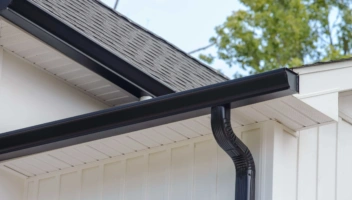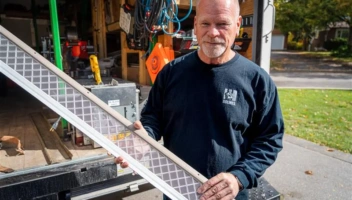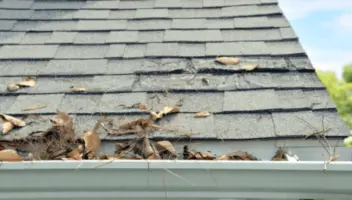Downspout Elbow Types: What’s Best For Your Home?
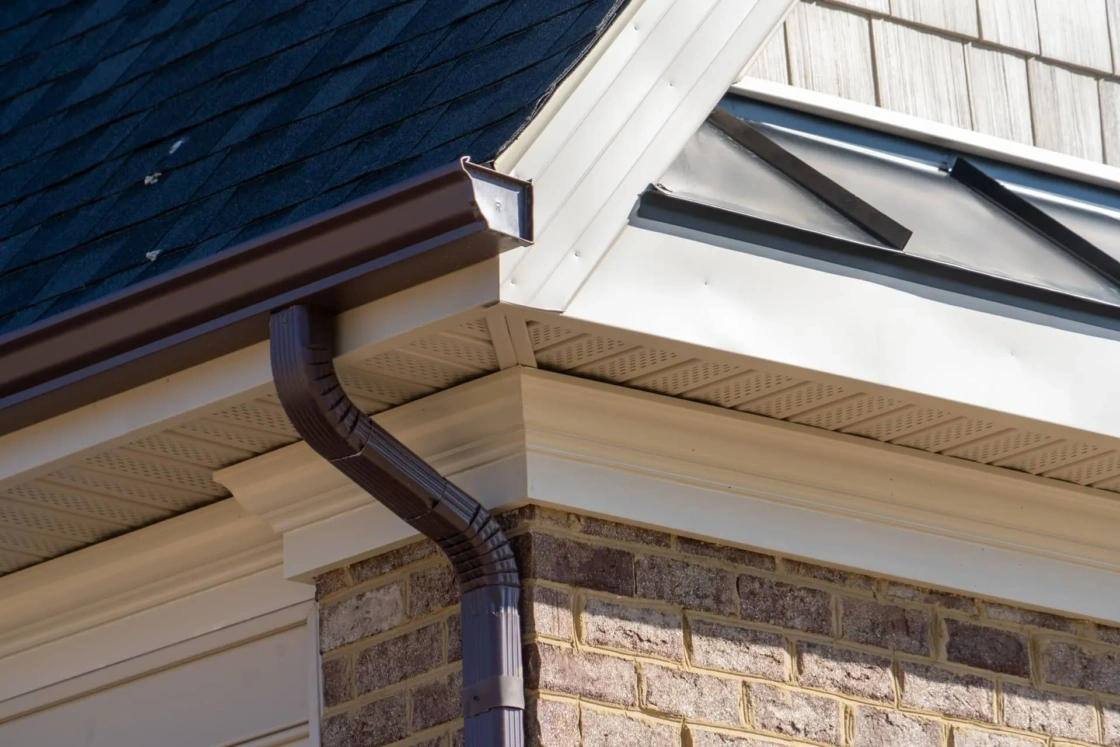
In a gutter system, downspouts are easily overlooked. However, they have a very important job—to keep the water away from the base of the home. The important piece that makes that happen is a downspout elbow. That said, not all downspout gutter elbows are the same, which is why it’s important to understand the differences between them before a gutter installation or repair. This guide will explore what these different types of elbows are and how they can be implemented into your gutter system.
What Are Downspout Elbows?
Downspout elbows are an integral part of a gutter system, connecting the downspout to the gutter itself. They let a straight downspout change direction—at the gutter outlet and again near the ground—to carry water away from your foundation. These angled pipe fittings come in several types, angles, and materials.
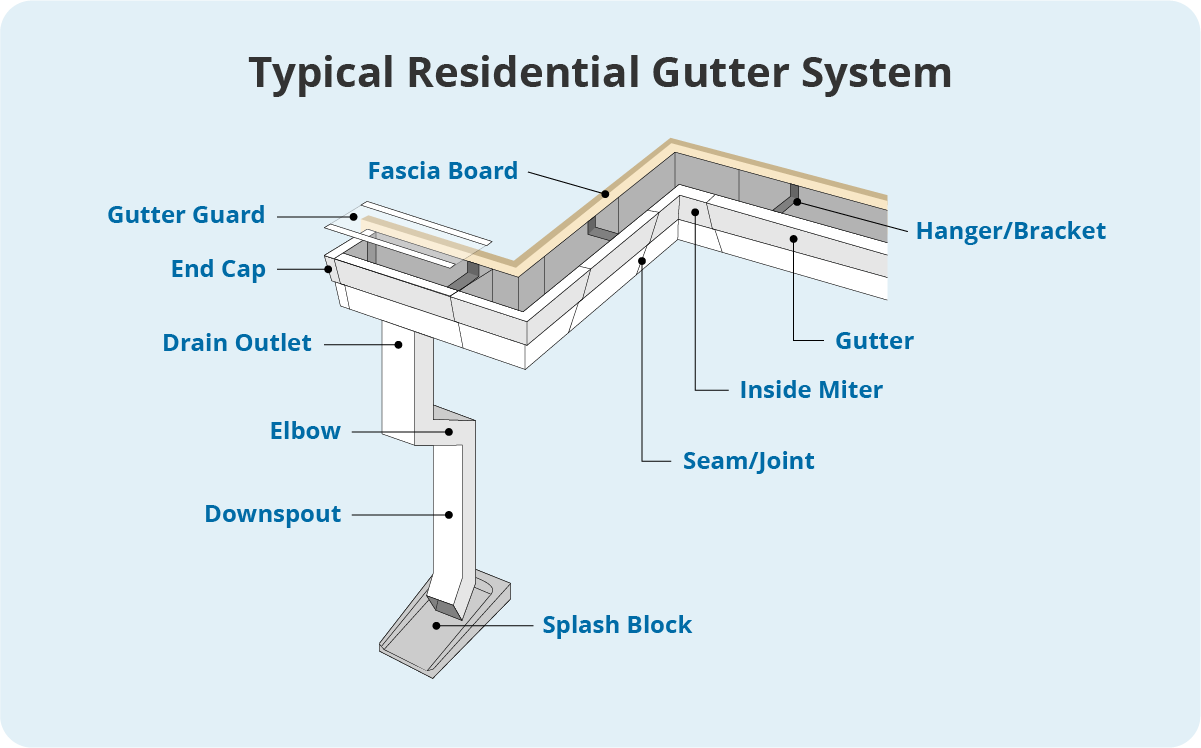
Types of Downspout Elbows (A-Style vs. B-Style)
Downspout elbows change the direction of water as it leaves the gutter and as it discharges near the ground. The two standard profiles—A-style and B-style—turn the spout in different planes, and most homes use a mix of both.
A-Style Downspout Elbows
An A-style elbow directs water forward or backward, extending from the bottom of a downspout toward you. Often, they are used to connect a downspout that runs along the side of a home and can be placed at either the top or bottom of the downspout, as well as to direct water away from sidewalks and driveways.
B-Style Downspout Elbows
Unlike an A-style elbow, a B-style elbow goes from left to right. These elbows direct water to a side and are taller than they are wide. B-elbows are often used to attach to a downspout that runs down the corner of a house rather than the side. They are also necessary for navigating around obstacles, such as windows or landscaping, in the downspout path.
Choosing Between A and B Elbows
The biggest choice you’ll have to make between A and B-style elbows is which way you want the water to flow. If you need it to go forward, choose the A-style, and if you need it to go sideways, use the B-style. Although most use both in their gutter system, be sure not to use too many elbows. Each bend in the elbow presents a place for debris to gather and clog.
Downspout Elbows Angles
Because you may want water to flow in different directions, there are several varieties of downspout elbow angles. The sharper the angle, such as a 90-degree elbow, the slower the water flow due to the turbulence of the water navigating around the bend. In contrast, a 30- or 40-degree elbow provides a gentle water flow with less turbulence.
There is also the option of using an adjustable downspout elbow, which allows for non-traditional custom angles since they are flexible. The downside of adjustable downspout elbows, however, is that they are more prone to leaks and damage as the flexible seams break down.
30-Degree Elbows
This is the gentlest elbow angle, meant for subtle water redirection. They are suitable for short redirections, such as moving water between the roof fascia and the wall.
45-Degree Elbows
A 45-degree elbow is slightly sharper than a 30-degree elbow, but it still has a high water flow rate.
75-Degree Elbows
75-degree elbows are the most common type used. This is because there is still sufficient water velocity to maintain a good flow with reduced clog potential and more pronounced redirection.
90-Degree Elbows
Sometimes 90-degree downspout elbows are unavoidable because you have to install around a sharp turn. However, that sharp turn can slow the water velocity, leading to a higher likelihood of clogs or backups in the system. You often see these elbows at the bottom of a downspout to sharply direct water away from the home or into a downspout extension.
Downspout Elbow Sizes and Materials
The most common elbow sizes match up with the most common downspout sizes: 2×3 inches and 3×4 inches. You need to match the elbow size to your downspout for an optimal fit. Often, a 2×3 inch is paired with five-inch gutters, while a 3×4 inch is paired with 6-inch gutters. That is because the larger the size, the higher the water capacity.
Downspout elbows are most commonly found in vinyl, aluminum, and steel. However, they can also be purchased in premium metals like copper. The more rain or extreme weather your home receives, the more heavy-duty you want the downspout elbow to be. Vinyl is the cheapest but also weakest option, while steel and copper are much stronger.
Other Factors When Choosing Downspout Elbows
Just like with installing a new gutter system and choosing gutters, there are additional considerations to be made based on where you live. For example, you may need a larger downspout elbow to accommodate heavier rains or stronger materials like steel that can outlast vinyl in the face of harsher weather patterns.
- Climate considerations: In areas with frequent storms, heavy snow loads, or strong winds, durable materials like galvanized steel or copper hold up better than vinyl or aluminum. Constant sun exposure can also make vinyl brittle and prone to cracking from UV damage. If you live in a coastal region, look for corrosion-resistant options such as aluminum or copper to help prevent premature rusting.
- Aesthetics/color matching: Choose a downspout elbow that blends with the rest of your gutter system. Matching colors and finishes keeps the system looking cohesive and less noticeable against your home’s exterior.
- Roof area: For a larger roof area, use larger downspouts/elbows, add extra downspouts, and ensure the outlet directs water 6–10 ft from the foundation using a splash block or extension.
- Roof pitch: The steeper the roof pitch, the more quickly water flows down into the gutter system. You need downspouts/elbows that can withstand the amount of water.
Common Installation Mistakes to Avoid
While the process of installing downspout elbows is pretty straightforward, there are a handful of mistakes to be mindful of. Although the elbow is just a part of the gutter setup, if it isn’t installed correctly, it interrupts the effectiveness of the whole system.
- Too many elbows – causes restricted water flow and added potential for clogs.
- Poor alignment – when the elbow isn’t properly aligned, there can be leaks, which can cause foundational or landscape damage.
- Wrong angles – if the elbow angles don’t allow for enough water to flow at a high enough rate, the water may not drain through the system as it should.
- DIY risk – when doing this kind of project on your own, you run the risk of not doing it correctly. We highly recommend using professionals like the experts at LeafFilter.
Choosing the Best Downspout Elbow for Your Home
The right downspout elbows help ensure your gutters drain properly and keep water safely away from your foundation. Choosing the right type depends on three key factors: your home’s aesthetic, the amount of rainfall in your area, and the direction you want water to flow. With these in mind, you can select elbows that maximize drainage efficiency and protect your property.
Quick Guide: Choosing the Right Downspout Elbow
- Placement: Use Type A for straight runs off the fascia; combine A + B for corners/eaves.
- Angle: Most homes use 75° elbows for smooth flow.
- Size: Standard sizes are 2×3 in. or 3×4 in. — measure before buying.
- Match: Pick the same material + color as your downspouts for durability and curb appeal.
- Pro Tip: Always direct water 6–10 ft away from your foundation with an extension or splash block.
Good to know: Professional gutter installers will size, place, and match elbows for you if you’d rather not DIY.
Though small, downspout elbows play a critical role in protecting your home from costly water damage. You can install elbows yourself, but for lasting performance and proper fit, it’s worth turning to the professionals like the team at LeafFilter Gutter Protection.
Frequently Asked Questions
What angle elbow is best for my gutter downspout?
The most common gutter downspout elbow angle for a home is 75 degrees. It offers a high water velocity and a smaller likelihood of debris build-up. However, it depends upon what your downspout setup looks like and what you need each elbow to do. A 30-degree elbow is good for short distances, for instance, and 90-degree elbows are often used at the bottom of a downspout to direct water out or into an extension.
Can I install downspout elbows myself?
You can, though we highly recommend using a gutter professional if you are facing a more complicated installation, like a multistory home or a historic home with decorative eaves. It is also a good idea to hire professionals for work longevity and safety, both for yourself and your home. If you plan on doing it yourself, you will need gutter sealant, screws or rivets, and a tool to cut the elbows, such as a hacksaw or tin snips.
How do I maintain downspout elbows to prevent clogs?
The best way to prevent clogs is to clean out your downspout elbows at the same time you clean out your gutters. At least twice a year, you should be maintaining your downspouts (including the elbows) and gutters by removing debris and inspecting for damage. Often, this gutter cleaning is done in the late spring and early fall.
Are certain elbow materials better for corrosion resistance?
Yes. Aluminum elbows are lightweight, rust-resistant, and widely used. Copper is also highly resistant to corrosion and very durable, although it is expensive. Galvanized steel is strong but can rust if the protective coating wears off.
Do adjustable elbows affect water flow?
They can, especially if set at 90 degrees, since tighter bends create turbulence and slow velocity. When possible, opt for smoother, gentler angles to keep water moving efficiently through your system.
